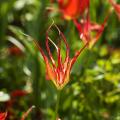Shipping country and language
Your country of residence may be:
Your country of residence is:
For a better user experience on our website, you can select:
Your shipping country:
Andorra
Austria
Belgium
Bulgaria
Canada
Chile
Croatia
Cyprus
Czechia
Denmark
Estonia
Finland
France
Germany
Greece
Hungary
Iceland
Ireland
Italy
Latvia
Lithuania
Luxembourg
Malta
Monaco
Netherlands
Poland
Portugal
Romania
Slovakia
Slovenia
Spain
Sweden
Switzerland
United Kingdom
We only deliver seed and bulb products to your country. If you add other products to your basket, they cannot be shipped.
Language:
French
German
Spanish
English
My Account
Hello
My wish lists
Plantfit
Log in / Register
Existing customer?
New customer?
Create an account to track your orders, access our customer service and, if you wish, make the most of our upcoming offers.
Fringed or dentate Tulips, all our special offers
Does this plant fit my garden? Set up your Plantfit profile →

Available in 1 sizes
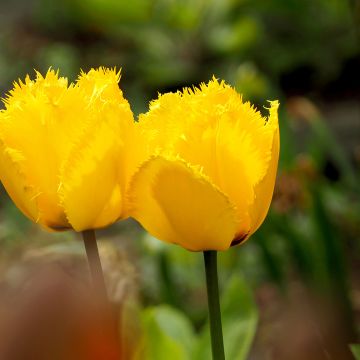
Available in 1 sizes
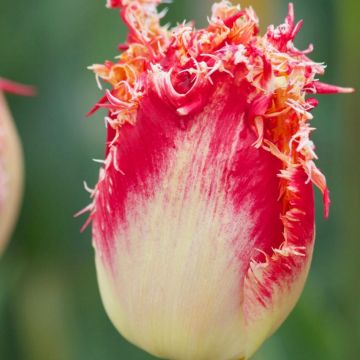
Available in 1 sizes
Available in 1 sizes
Available in 1 sizes
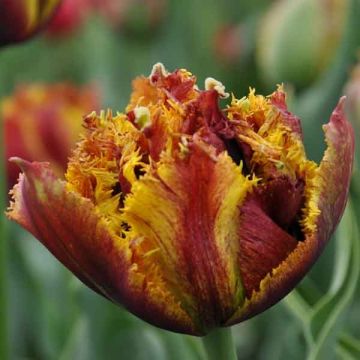
Available in 1 sizes
Available in 1 sizes
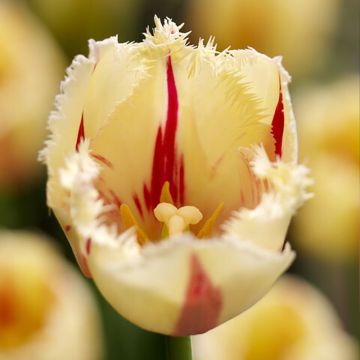
Available in 1 sizes

Available in 1 sizes
Available in 1 sizes
Available in 1 sizes
The group of fringed tulips, also known as 'Crispa', gathers varieties with single flowers, and even double flowers for some recent varieties like 'Exotic Sun', which stand out with their satin texture and the finely laciniate upper edge of their petals, as if adorned with frost crystals that enhance their wonderful colours. The origin of this characteristic that makes them so endearing is not known. They bloom in the second half of spring, a little later than other tulips and they have stems of variable height.
These are generally very resistant horticultural varieties, which integrate well both in sunny flowerbeds and in spring bouquets. The range of colours is almost infinite, from the rosy purple of the Tulip 'Louvre', passing through the yellow of 'Maja', the marriage of soft apricot and pink in 'Aleppo', or the bright red of 'Redwing', to the sparkling white of 'Smirnoff'. By mixing varieties and colours, it is easy to create very beautiful floral compositions, worthy of old Flemish paintings.
Their bulbs are easy to grow. They are planted in the autumn, in ordinary soil, moist to dry in summer, loose, well-worked and well-draining. Fringed tulips appreciate a sunny or semi-shaded exposure. You may enjoy their beautiful flowers for several years, it is preferable to feed the bulbs with a dedicated fertilizer, and to dig them up in summer, to replant them in the autumn.
Haven't found what you were looking for?
The flowering period indicated on our website applies to countries and regions located in USDA zone 8 (France, the United Kingdom, Ireland, the Netherlands, etc.)
It will vary according to where you live:
- In zones 9 to 10 (Italy, Spain, Greece, etc.), flowering will occur about 2 to 4 weeks earlier.
- In zones 6 to 7 (Germany, Poland, Slovenia, and lower mountainous regions), flowering will be delayed by 2 to 3 weeks.
- In zone 5 (Central Europe, Scandinavia), blooming will be delayed by 3 to 5 weeks.
In temperate climates, pruning of spring-flowering shrubs (forsythia, spireas, etc.) should be done just after flowering.
Pruning of summer-flowering shrubs (Indian Lilac, Perovskia, etc.) can be done in winter or spring.
In cold regions as well as with frost-sensitive plants, avoid pruning too early when severe frosts may still occur.
The planting period indicated on our website applies to countries and regions located in USDA zone 8 (France, United Kingdom, Ireland, Netherlands).
It will vary according to where you live:
- In Mediterranean zones (Marseille, Madrid, Milan, etc.), autumn and winter are the best planting periods.
- In continental zones (Strasbourg, Munich, Vienna, etc.), delay planting by 2 to 3 weeks in spring and bring it forward by 2 to 4 weeks in autumn.
- In mountainous regions (the Alps, Pyrenees, Carpathians, etc.), it is best to plant in late spring (May-June) or late summer (August-September).
The harvesting period indicated on our website applies to countries and regions in USDA zone 8 (France, England, Ireland, the Netherlands).
In colder areas (Scandinavia, Poland, Austria...) fruit and vegetable harvests are likely to be delayed by 3-4 weeks.
In warmer areas (Italy, Spain, Greece, etc.), harvesting will probably take place earlier, depending on weather conditions.
The sowing periods indicated on our website apply to countries and regions within USDA Zone 8 (France, UK, Ireland, Netherlands).
In colder areas (Scandinavia, Poland, Austria...), delay any outdoor sowing by 3-4 weeks, or sow under glass.
In warmer climes (Italy, Spain, Greece, etc.), bring outdoor sowing forward by a few weeks.











